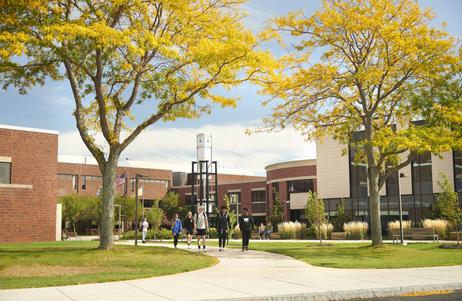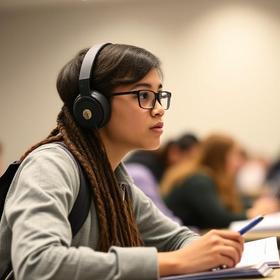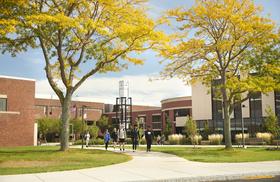What Does the Future of Community College Look Like in 2025?
The COVID-19 pandemic inflicted jolts across American higher education. Community colleges, in particular, felt the shock acutely: enrollment declines, shifts to remote learning, and rising student needs. But as we enter 2025, the sector is adapting. What does the post–COVID future truly look like for community colleges? In this updated analysis, we explore enrollment trends, cost pressures, new program models, technology adaptation, equity and student support, and what it means for students, families, and educators
.
Enrollment Trends and Demographics
One of the most visible impacts of the pandemic was the sustained drop in enrollment at two-year institutions. As of Fall 2024, U.S. undergraduate enrollment was about 19.28 million — down 8.4 percent from its 2010 peak.Community and technical colleges bore a disproportionate share of that decline.
However, 2025 has brought signs of adaptation and modest recovery. According to Six Community College Trends to Watch in 2025, credential awards rose by 10.3 percent in spring 2024 compared with the previous year, signaling renewed student interest in shorter, more targeted credentials.Many community colleges now report stabilized or slowly increasing headcounts in certificate and workforce programs, even if traditional degree enrollment remains muted.
Key demographic shifts include:
YOUnger learners, especially Gen Z, are increasingly adopting micro-credentials and stackable certificates rather than full two-year degrees. league.org
Adult learners and re-skilling populations, who were a major target during recovery, continue to drive demand for flexible, fast-track programs.
Greater diversity: community colleges remain a gateway for first-generation, underrepresented minority, and low-income students. Post-pandemic, institutions are doubling down on outreach to underserved communities.
Geographic variation: rural community colleges in areas with limited broadband still struggle, while urban and suburban institutions (with stronger infrastructure and employer links) have fared better.
While total headcounts may not yet be fully restored, the mix of students is shifting—toward demand-driven, short-duration credentials and career pathways.
Tuition, Costs, and Affordability Pressures
Affordability remains a core selling point for community colleges. In 2025, the average in-state tuition at public community colleges is about $5,099 per year, with out-of-state rates averaging $8,784. Other sources put typical in-district community college tuition and fees near $4,050 per year (for full-time students) — an amount that accounts for approximately 20 percent of a typical student’s total cost of attendance. Center for American Progress+1
Still, the sticker price is only part of the picture. For many students, living expenses, transportation, books, child care, and lost wages pose greater burdens. A 2025 analysis by American Progress underscores that tuition and fees are relatively small within the overall student budget, but non-tuition costs remain a key barrier. Center for American Progress
To reduce student costs and boost retention, states and colleges are experimenting with:
Promise programs and free tuition initiatives, especially targeting community college students.
Dual enrollment and early college programs, enabling high school students to earn college credits at reduced or no cost.
Employer/taxpayer partnerships where local industries subsidize credentials tied to in-demand jobs.
Expanded financial aid, emergency grants, and wraparound support to cover non-tuition costs like transportation, childcare, or technology.
These innovations are vital to ensuring that community colleges remain accessible to economically vulnerable students.
Program Innovation and Workforce Alignments
A defining post-COVID shift is a sharper focus on career alignment. Community colleges are repositioning themselves not just as transfer institutions but as workforce hubs. The imperative is clear: close the skills gap in sectors like healthcare, IT, advanced manufacturing, green energy, and logistics.
Some prominent developments in 2025:
Short-term credentials, micro-credentials, and certificate stacks are becoming standard. Younger students now view these not merely as fallback options but as viable paths to stable jobs.
Apprenticeships and earn-while-you-learn models continue to expand. For instance, states like Illinois are launching apprenticeship tracks in agriculture, in partnership with community colleges.
College-to-career bridges: Many institutions are embedding career pathways into general education, including “co-requisite” supports and competency-based education (CBE).
Regional employer collaboration: Colleges are deepening ties with local industry on curriculum design, internships, subsidized credentials, and direct hiring pipelines.
Baccalaureate program expansion: Some community colleges are seeking to offer limited bachelor’s degrees (especially in workforce-related fields) to retain enrollments and compete locally.
A recent shift helps illustrate this: Houston Community College voted to rebrand as Houston City College and is expanding bachelor’s-level offerings in AI, health care management, and other growth fields.
These trends underscore a transformation: community colleges play dual roles as transfer institutions and as institutions of direct economic mobility.
Technology, AI, and Institutional Efficiency
COVID forced a sea change in digital readiness. In 2025, technology and data are no longer optional—they are core infrastructure.
Artificial Intelligence (AI) and predictive analytics are being used to track at-risk students, personalize interventions, and guide advising. Early-alert systems flag attendance declines or grade drops; automated nudges help maintain student momentum.
Hybrid and adaptive learning platforms now dominate general education and remedial courses, blending online components with in-person labs or workshops. Many colleges also leverage augmented reality (AR)/virtual reality (VR) simulations in technical and health professions training.
Operational efficiency: Colleges are streamlining administrative back-end systems (e.g., registration, scheduling, and financial aid) using automation, RPA (robotic process automation), and cloud-based infrastructure, freeing staff to focus on student-facing support.
However, technology also introduces challenges: digital equity (broadband access, device affordability), faculty training, data privacy, and institutional capacity. Many colleges now embed digital literacy and student success coaching into their programs to mitigate those gaps.
Equity, Student Support, and Retention
Equity and completion are front and center in the post-pandemic era. Community colleges are intensifying efforts to support under-resourced students. Key strategies in 2025 include:
Holistic student supports: mental health counseling, food pantries, childcare, transportation assistance, and emergency grants are now mission-critical. For example, Lone Star College recently appointed its first Chief Mental Health Officer to expand telehealth, counseling access, and integrated student care systems.
Proactive advising and coaching: intrusive advising—guided pathways, early alerts, intrusive outreach—seeks to keep students on track from day one.
Equity-minded redesigns: many colleges are reviewing academic policies (e.g., withdrawal deadlines, academic probation, remedial prerequisites) through an equity lens to remove systemic barriers.
Data equity dashboards: disaggregated metrics on retention/completion by race, income, first-generation status, and modality (in-person vs. online) guide resource allocation.
Bridge and preparatory programs, particularly for underprepared students, aim to accelerate readiness without segregating them.
Learning communities and cohort models help build peer networks and belonging, which are critical, especially for part-time or remote students.
Retention remains a challenge: many colleges are deploying “momentum metrics” (e.g., completing key gateway courses, sustaining credit momentum) to monitor progress and flag interventions early.
Challenges and Risks Ahead
While the future is promising, the path is not without obstacles:
Enrollment volatility: shifts in high school graduation rates, changing demographics, and economic cycles could destabilize demand.
Funding uncertainty: many community colleges rely on fragile state/local funding or one-time recovery grants. Sustaining new initiatives (e.g., AI, wraparound supports) demands reliable revenue.
Credential signaling: as micro-credentials proliferate, ensuring employer recognition and credential portability is essential.
Faculty development: transforming pedagogy for hybrid, competency-based, and AI-enhanced models requires ongoing professional development and cultural shifts.
Equity blindspots: technological and support innovations may inadvertently favor already-advantaged students unless equity is baked in.
Perception and mission identity: as some community colleges morph toward offering bachelor’s degrees, preserving mission clarity (access, affordability) is vital.
How This Matters for Students, Families, and Educators
For students and families, the evolving community college landscape in 2025 offers opportunity—but also complexity. The proliferation of micro-credentials and stackable pathways requires careful planning: not all short programs fully transfer or lead to strong earnings. Families should stay alert to employment outcomes, credential recognition, and affordability protections.
Educators and leaders must balance innovation and mission. A community college that fully commits to workforce alignment, equity, style="line-height:1.38;margin-top:12pt;margin-bottom:12pt;">In practice, the future community college is less about one-size-fits-all degrees and more about modular pathways, lifelong learning, embedded supports, and deep regional alignment. The post–COVID era is not one of return, but of transformation.
For those exploring secondary and higher education options, remember: community colleges in 2025 are no longer just stepping stones—they are dynamic institutions at the intersection of education, technology, and local economies.
For complementary perspectives on K–12 and private schooling trends, see our work at PrivateSchoolReview.com and BoardingSchoolReview.com.












